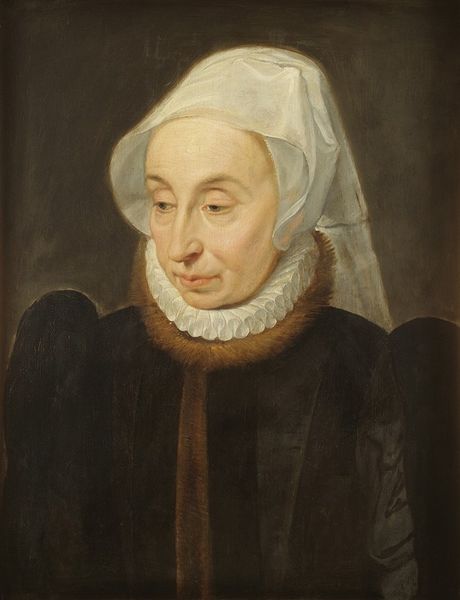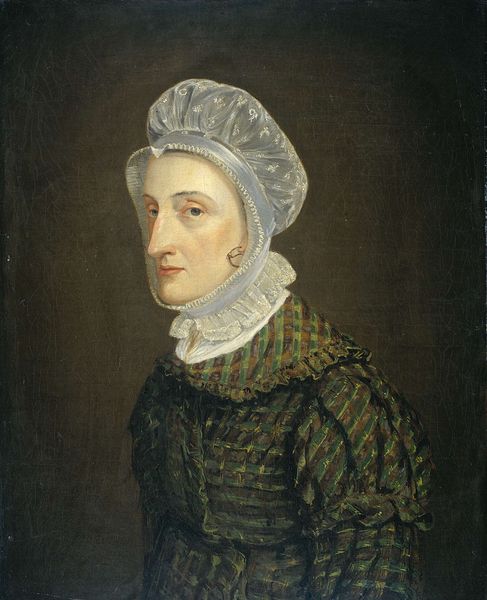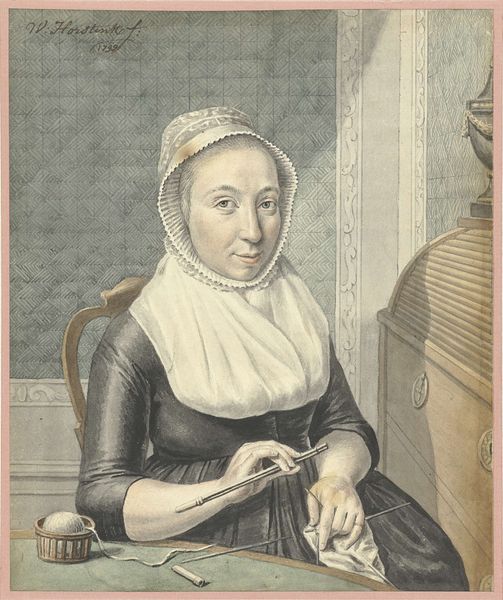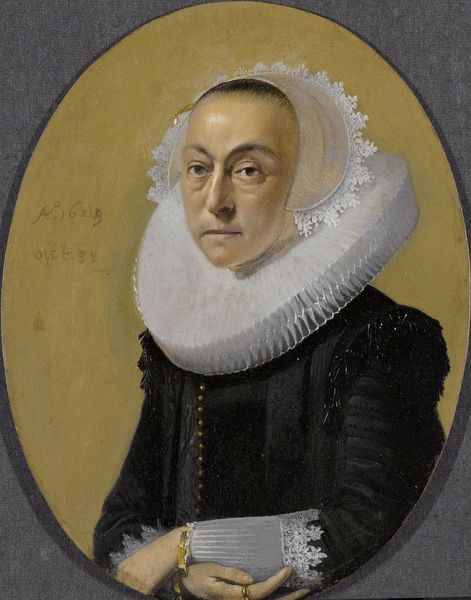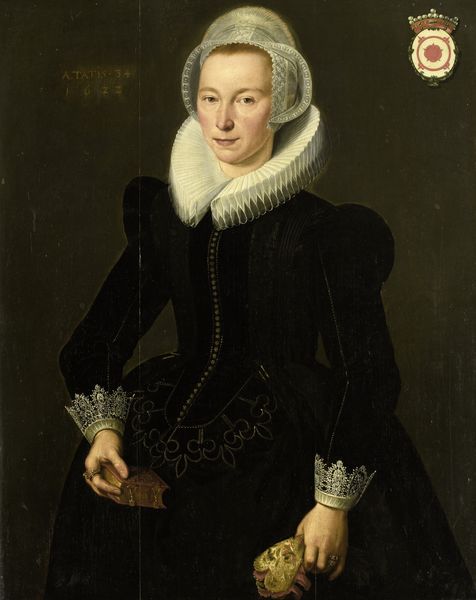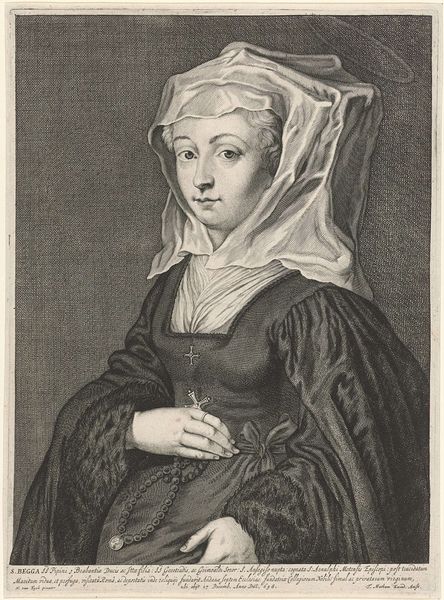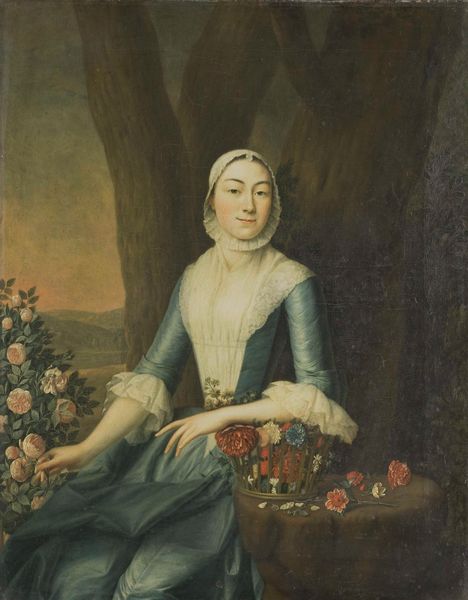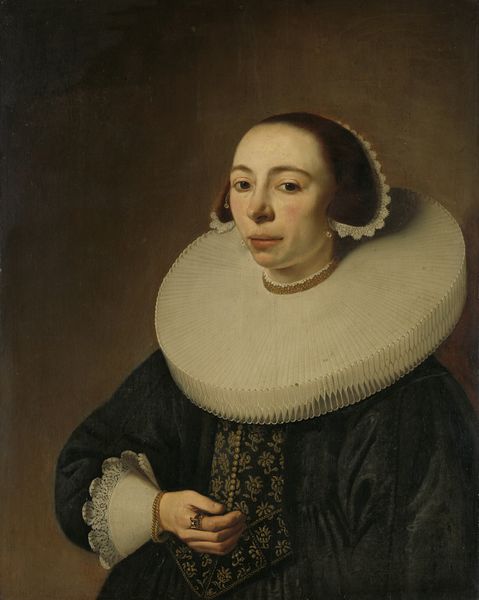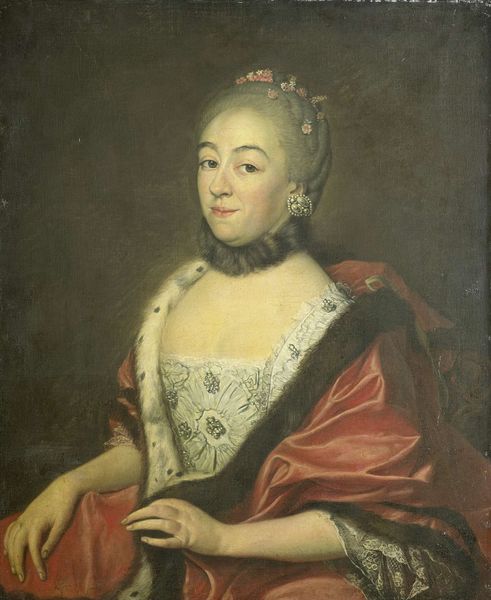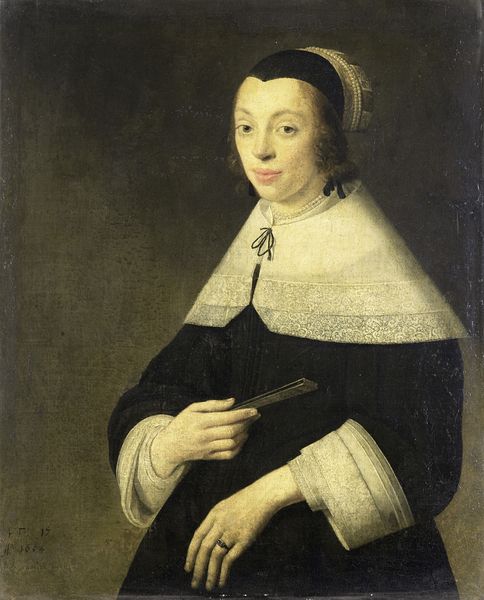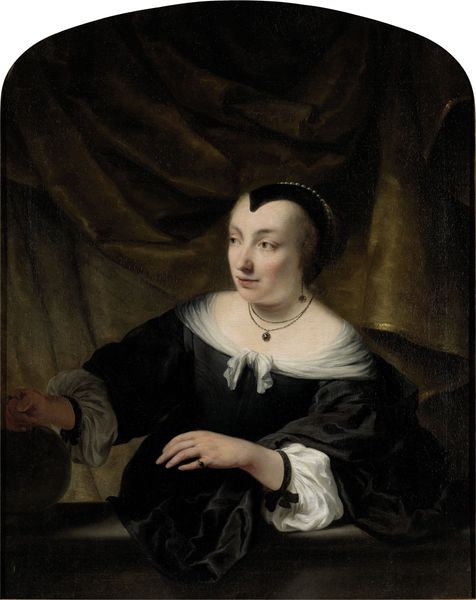
painting, oil-paint
#
portrait
#
dutch-golden-age
#
painting
#
oil-paint
#
genre-painting
#
realism
Dimensions: height 76.5 cm, width 60.5 cm, depth 6 cm
Copyright: Rijks Museum: Open Domain
Curator: Up next we have "Portrait of Eva Goudriaan-de Veer," a 1776 oil on canvas work by Cornelis van Cuylenburgh II, on display here at the Rijksmuseum. Editor: She looks…resigned. Or perhaps thoughtful is more generous. I find myself immediately drawn to the color palette though; that muted blue against the darkness is quite striking. Curator: It’s a classic Dutch Golden Age portrait, so restraint is part of the aesthetic. Think about the Dutch Republic in the late 18th century; rising merchant class, emphasis on civic duty, and the domestic sphere. Her posture, her clothing—it speaks volumes about her place in society, her respectability. The book itself symbolizes literacy and education, both becoming increasingly valued for women in her social standing. Editor: True, but let's also consider what that cultivated "respectability" really meant. It was a gilded cage, wasn’t it? Limited choices, prescribed roles, their lives defined by marriage and motherhood. We see so many portraits of women posed with books during this era, yet that visibility might ironically mask constraints and the patriachal forces shaping these realities. Was education truly liberating, or just a performance of virtue to enhance her marriage prospects? Curator: An interesting, perhaps cynical, read of the portrait. I will acknowledge the piece does represent her positioning within societal hierarchies. While these paintings were largely commissioned pieces for specific families and their private circles, public interest in a more 'real' reflection grew, and you begin to see what feels closer to regular life depicted in art. It’s the rise of the bourgeois in art, showing their material wealth, perhaps, but also intimating social changes afoot. Editor: I agree the shift is important! It starts moving art closer to representing actual people with real lives. And perhaps in this woman's serene composure, holding her book, there might indeed be defiance or perhaps something akin to quiet fulfillment. It does push one to look deeper, to think about these figures not merely as decorative but complex human beings in very constrained situations. Curator: Ultimately, paintings like "Portrait of Eva Goudriaan-de Veer" serve as invaluable time capsules for historians, and even catalysts for broader cultural discourse. Editor: I'll leave here reassessing everything I think I know about Dutch portraiture...and Eva's likely life. Art history does it again.
Comments
No comments
Be the first to comment and join the conversation on the ultimate creative platform.

